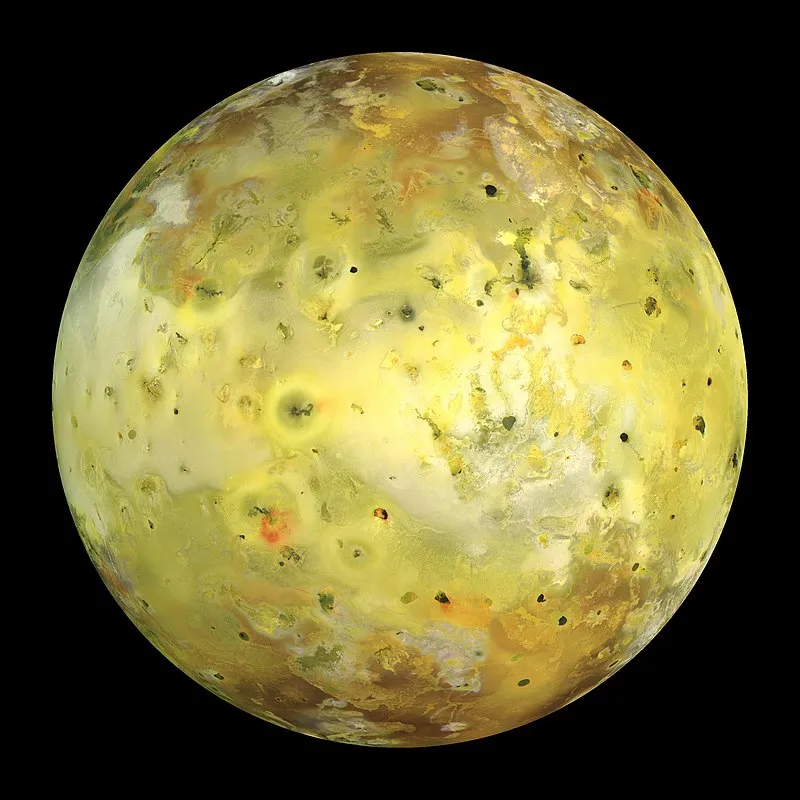Jupiter has about 80 known moons: four “Galilean moons,” four inner moons, and the rest are small outer moons. The Galilean moons (Io, Europa, Callisto, and Ganymede) were first discovered in 1610, but very little was known about them until the two Voyager spacecraft imaged them in 1979.
Io with cheese on top
Io is about the same size as Earth's moon, but it looks like a giant pizza. This is because it's covered by sulfur, which is usually yellow. When sulfur is heated, it changes color, first to red and then to black. The temperature of some of these hot spots can reach 2,730°F (1,500°C). Io is the most volcanically active object in the solar system. There are often a dozen or more volcanoes blasting umbrella-shaped clouds of gas and sulfur compounds into space.
Pele’s plume
Pelt is one of Io's largest volcanoes. When Voyager 1 passed it, a plume of gas and dust was rising 190 miles (300 km) above the surface and covered an area the size of Alaska. It can rise high above the moon before falling back to the surface because the gravity on Io is very low. The volcano is surrounded by a blanket of material thrown out during repeated eruptions that has fallen back down to the surface.
Approximately true-color image of Io from the Galileo spacecraft. The dark spot just left of the center is the erupting volcano Prometheus. The whitish plains on either side of it are coated with volcanically deposited sulfur dioxide frost, whereas the yellower regions contain a higher proportion of sulfur.

Space avisual encyclopedia.
wikkipedia